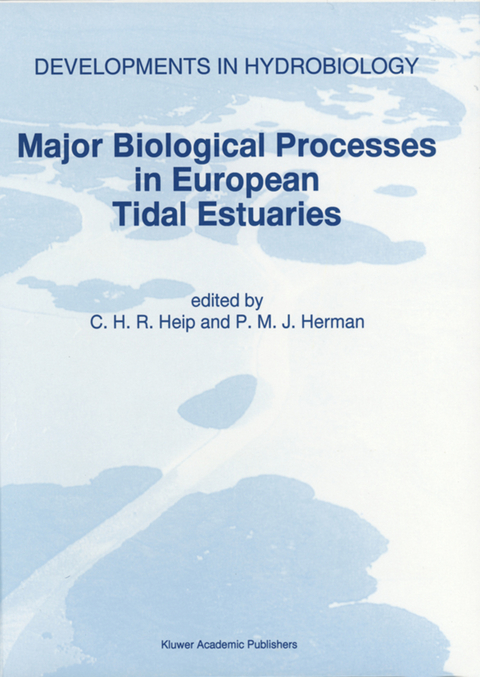
Major Biological Processes in European Tidal Estuaries
Springer (Verlag)
978-94-010-6539-9 (ISBN)
This estuary 3 gNm- Ammonia is unusual due to the high degree of eutrophication 3 gOm- Oxygen which results from the discharge of untreated wastes 3 gCl m- Chlorides (Heip, 1988) and due to the high residence time of the 3 gm- Suspended matter water masses (Soetaert & Herman, 1995a).
Major biological processes in European tidal estuaries: a synthesis of the JEEP-92 Project.- Primary production.- Nutrients, light and primary production by phytoplankton and microphytobenthos in the eutrophic, turbid Westerschelde estuary (The Netherlands).- Dynamics and distribution of microphytobenthic chlorophyll-a in the Western Scheldt estuary (SW Netherlands).- Bacterial processes.- Comparison of heterotrophic bacterial production rates in early spring in the turbid estuaries of the Scheldt and the Elbe.- Nitrous oxide emissions from estuarine intertidal sediments.- Carbon and nitrogen cycling in intertidal sediments near Doel, Scheldt Estuary.- Zooplankton.- Copepod feeding in the Westerschelde and the Gironde.- Long-term changes in the population of Eurytemora affinis (Copopoda, Calanoida) in the Gironde estuary (1978–1992).- Secondary production of the brackish copepod communities and their contribution to the carbon fluxes in the Westerschelde estuary (The Netherlands).- Feeding rates and productivity of the copepod Acartia bifilosa in a highly turbid estuary; the Gironde (SW France).- Production rates of Eurytemora affinis in the Elbe estuary, comparison of field and enclosure production estimates.- Comparative spring distribution of zooplankton in three macrotidal European estuaries.- Hyperbenthos.- Comparative study of the hyperbenthos of three European estuaries.- Meiobenthos.- Effects of manipulation of food supply on estuarine meiobenthos.- Meiobenthic distribution and nematode community structure in five European estuaries.- Macrobenthos.- The response of two estuarine benthic communities to the quantity and quality of food.- Modelling.- Estimating estuarine residence times in the Westerschelde (The Netherlands) using a box model with fixeddispersion coefficients.- Nitrogen dynamics in the Westerschelde estuary (SW Netherlands) estimated by means of the ecosystem model MOSES.- Carbon flows in the Westerschelde estuary (The Netherlands) evaluated by means of an ecosystem model (MOSES).
| Reihe/Serie | Developments in Hydrobiology ; 110 |
|---|---|
| Zusatzinfo | 139 Illustrations, black and white; VIII, 276 p. 139 illus. |
| Verlagsort | Dordrecht |
| Sprache | englisch |
| Maße | 195 x 260 mm |
| Themenwelt | Naturwissenschaften ► Biologie ► Ökologie / Naturschutz |
| Technik ► Umwelttechnik / Biotechnologie | |
| ISBN-10 | 94-010-6539-X / 940106539X |
| ISBN-13 | 978-94-010-6539-9 / 9789401065399 |
| Zustand | Neuware |
| Haben Sie eine Frage zum Produkt? |
aus dem Bereich


